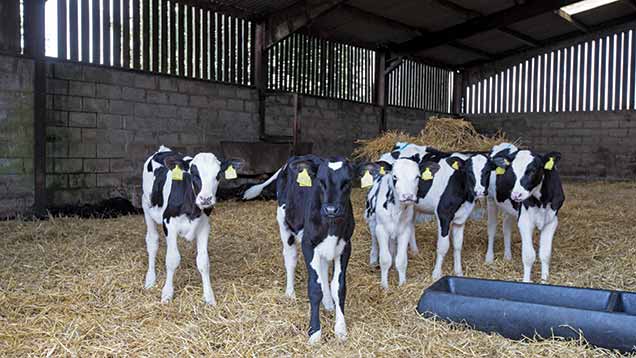Vaccination and good biosecurity is key to control BVD
 (c) Tim Scrivener
(c) Tim Scrivener Appropriate testing coupled with vaccination and good biosecuriy is crucial for the control of BVD. This is a taster of Farmers Weekly’s online BVD learning Academy, which provides farmers with advice on how to control the disease.
Establishing herd BVD status and putting steps in place to control disease or maintain BVD free status is crucial in preventing the potentially catastrophic effects of the disease on cattle health and reproduction.
See also: Information on what BVD is and how to control it
Once exposure to disease is identified, cattle farmers should carry out a risk assessment with their vet and review biosecurity and vaccination policy.
A strategy should then be put in place to identify and cull persistently infected (PI) animals that shed BVD virus and are the main cause of BVD spread. An ongoing monitoring policy is then crucial whether you have a BVD vaccinated or non-vaccinated herd.
See also: Half of herds not tested for BVD in the past year
Testing strategies
Testing strategies are based on milk, blood or tissue sampling and are designed to establish herd exposure and then identify specific PI animals for culling.
Antibody tests are used to establish exposure to disease. The existence of BVD antibodies shows an animal or herd has been exposed to the BVD virus, but is now immune. BVD antibodies will also be present in vaccinated herds.
Different tests are used to identify BVD virus. Virus will be present in an animal that has recently been exposed to BVD and is in the process of mounting an immune response. Virus will also be present in PI animals that will always test antibody negative, but virus positive.
Establishing BVD status
Bulk milk antibody samples are the first port of call when establishing status in a non-BVD vaccinated dairy herd. In non-vaccinated beef herds, blood testing 5-10 youngstock of between 9-15 months old for BVD antibodies is the best way to establish status. If samples are antibody negative, it is highly unlikely there is active BVD in your herd.
See also: Signs of BVD in your herd
If samples are positive, there is evidence of exposure to BVD in your herd and it is possible you have a PI animal. Work with your vet to design an appropriate control strategy and review biosecurity. The most effective route will be to vaccinate all breeding stock and identify and cull PI animals.
The process of finding PIs involves strategic testing of adult cows and youngstock for virus.
Maintaining control
Once a beef or dairy herd has started to vaccinate and eliminate PIs, it’s important to test for BVD virus in newborn calves as everything born for the next nine to 10 months could be a PI animal.
In vaccinated herds it is imperative to monitor BVD by blood sampling a batch of non-vaccinated animals from nine months of age for antibody annually. This will help identify if your farm vaccination protocols are working and if you need to test further to find PIs.
Biosecurity is also crucial in maintaining BVD-free status or controlling BVD. This should involve avoiding contact with neighbour’s animals, testing of cows and bulls for virus before and immediately after purchase, strict quarantine and vaccination.
Bull semen should also be tested for BVD virus. When buying in-calf animals, ensure the calf is also tested for virus as soon as it’s born to see if it’s a PI.

